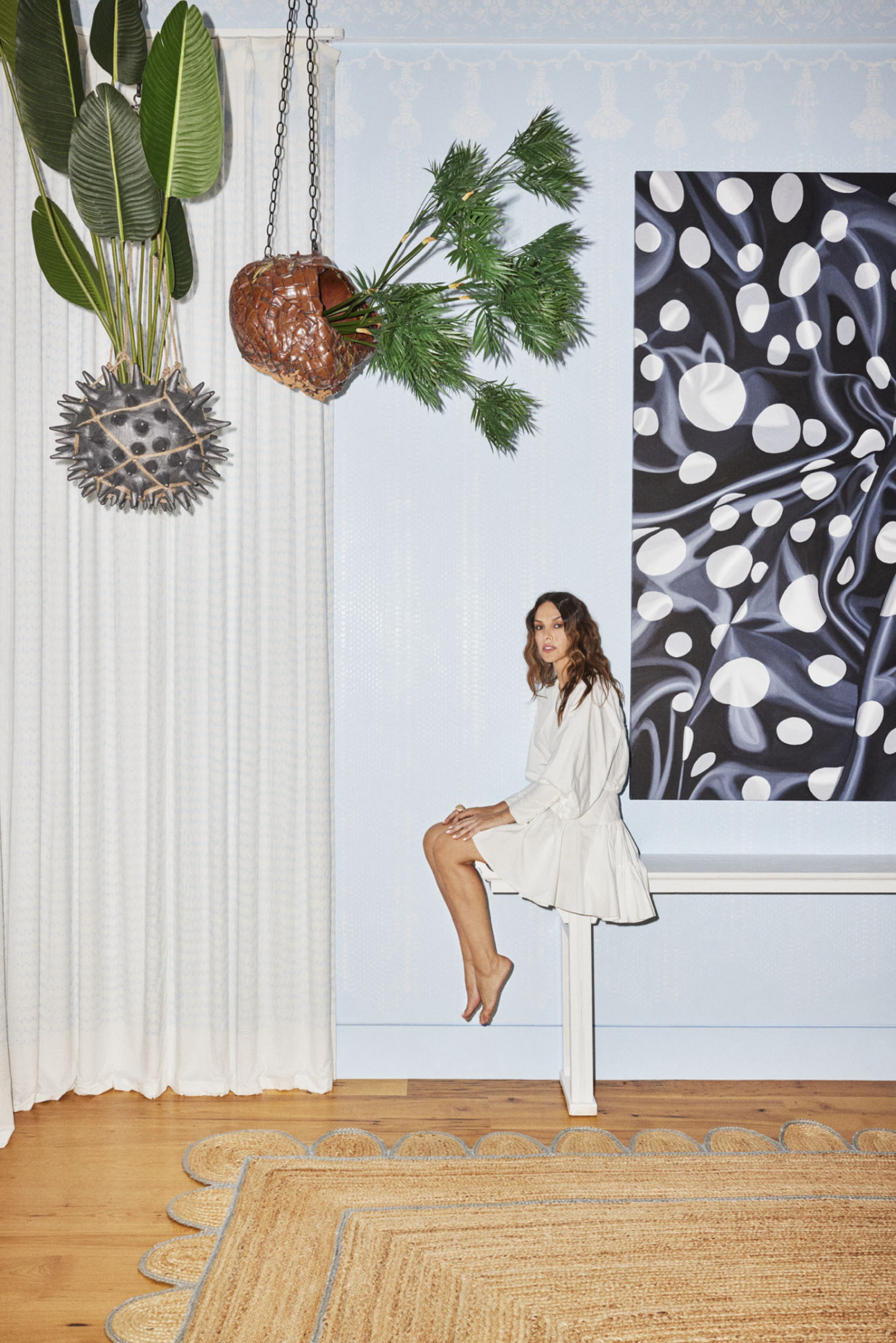
When Ivana Berendika made her first visit to a museum—to see an exhibition of World War II ephemera—she was confronted with artifacts that felt all too familiar for a child growing up in what was then Yugoslavia: bombs, guns, and tanks. “There was no space for art in that environment; that was our reality,” she remembers.
The Serbian jewelry designer and collector’s current surroundings are a far cry from those beginnings. After leaving her home country at 18 and settling in Miami, Berendika now has homes in New York, Montana, and the Bahamas. Her home in Baker’s Bay, where she spends part of the year, is airy, sprawling, and verdant—and full of works from a formidable art collection that includes a plethora of female artists including Jenny Holzer, Kelly Akashi, and Lauren Halsey. “One positive thing we had in Yugoslavia were these amazing Brutalist monuments,” she recalls. “Subconsciously, I think [they] developed my love for sculpture, which has always been my favorite medium.”
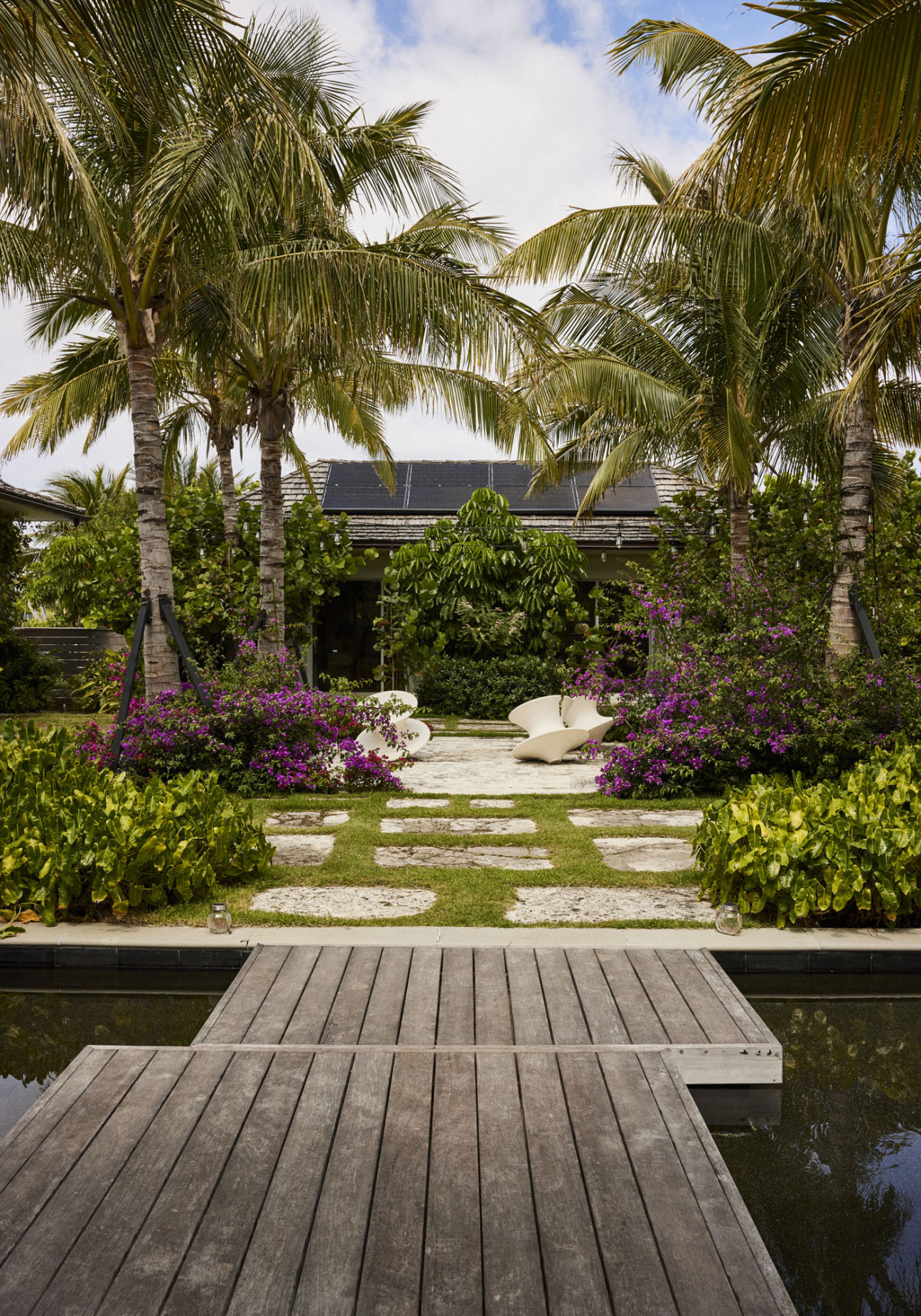
These days, Berendika divides her time between her roles as an arts patron, freelance designer, and parent. Though so much has changed along the way, Berendika maintains a worldview shaped by her earliest experiences. “Everything we own in life is just borrowed,” she muses. “It could all be gone tomorrow, so I try to enjoy it while I have it.”
Here, the creative lets CULTURED into her Baker’s Bay home for a tour of the pieces currently driving that exuberance.
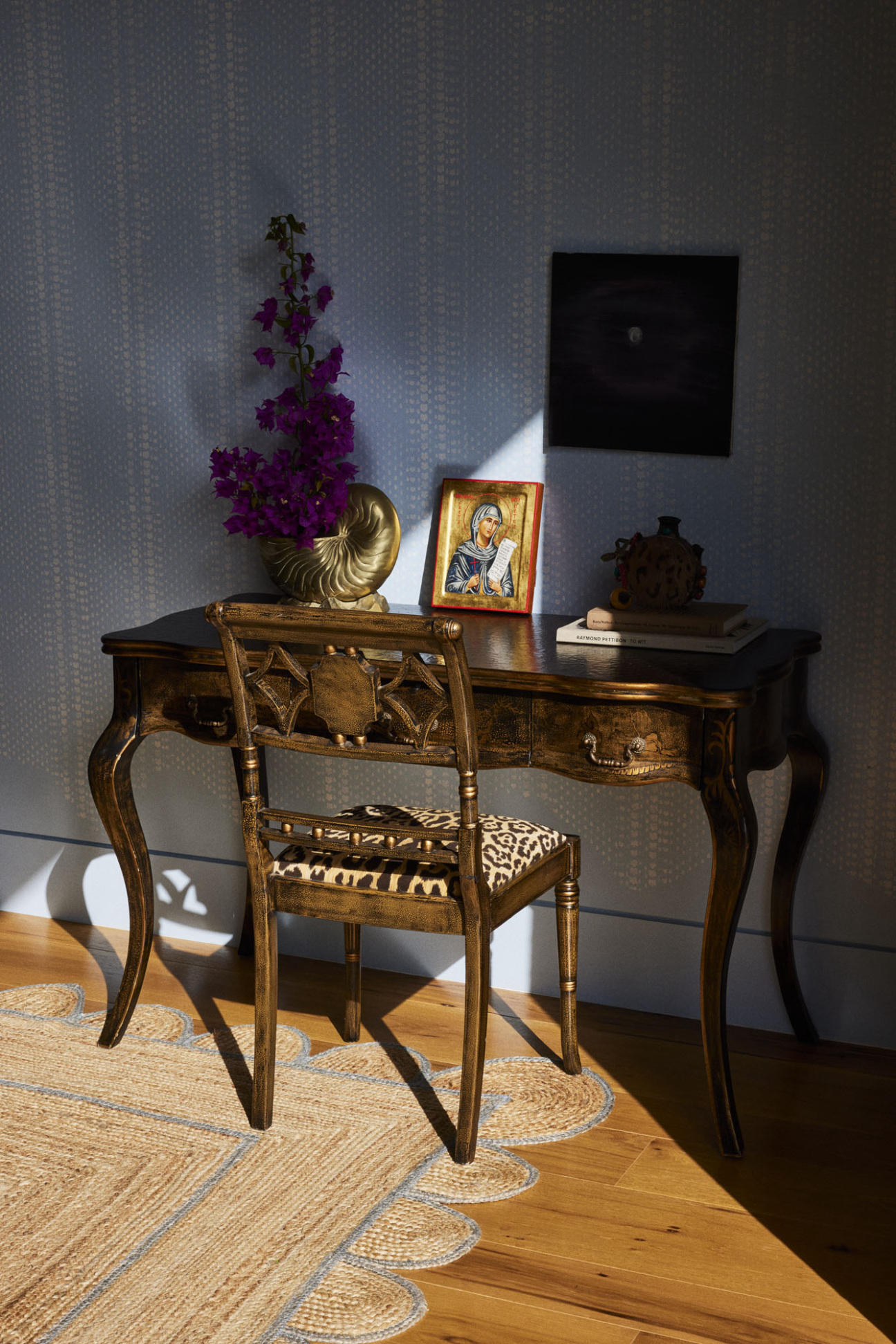
Where does the story of your personal collection begin?
I moved to Miami two years after the arrival of Art Basel. The whole city would come alive that week. There was so much excitement. I just couldn’t believe that something like this existed. I used to go from morning to night every day of the week, seeing absolutely everything. It was a great way to train the eye. I also got lucky by becoming friends with locals who had significant art collections and would take me to their homes. They would tell me about each artist, and then I would go home and read everything I could find on the artists I liked. Before I knew it, I was properly hooked. Interestingly, I didn’t start buying for a long time, probably 10 years. I felt so overwhelmed. There was so much to learn, so I signed up for every art class I could find and joined art organizations to help me learn.
How does the location of Baker’s Bay impact the kind of artwork and design that you bring into your home?
The level of sun exposure and salt in the air in tropical climates is significant. When you add a yearly hurricane to the mix, it brings another set of issues. One of the first art pieces I bought was a large drawing by Kiki Smith on rice paper, which I didn’t frame despite recommendations. Seven years later, the piece ripped in the middle and the paper disintegrated, even though it was never exposed to direct sunlight.
Also, the house in the Bahamas was completely destroyed by Hurricane Dorian in August 2019, the worst hurricane this area has ever seen. During moments like that, I tried to focus on the bigger picture. People I know lost their lives and everything they had, while I lost material possessions. Don’t get me wrong, I’m not trying to downplay the significance of it. I value my belongings, but I learned early in life not to get too attached to anything. Everything we own in life is just borrowed. It could all be gone tomorrow, so I try to enjoy it while I have it. I strive to impart that lesson to my kids every day and simultaneously remind myself.
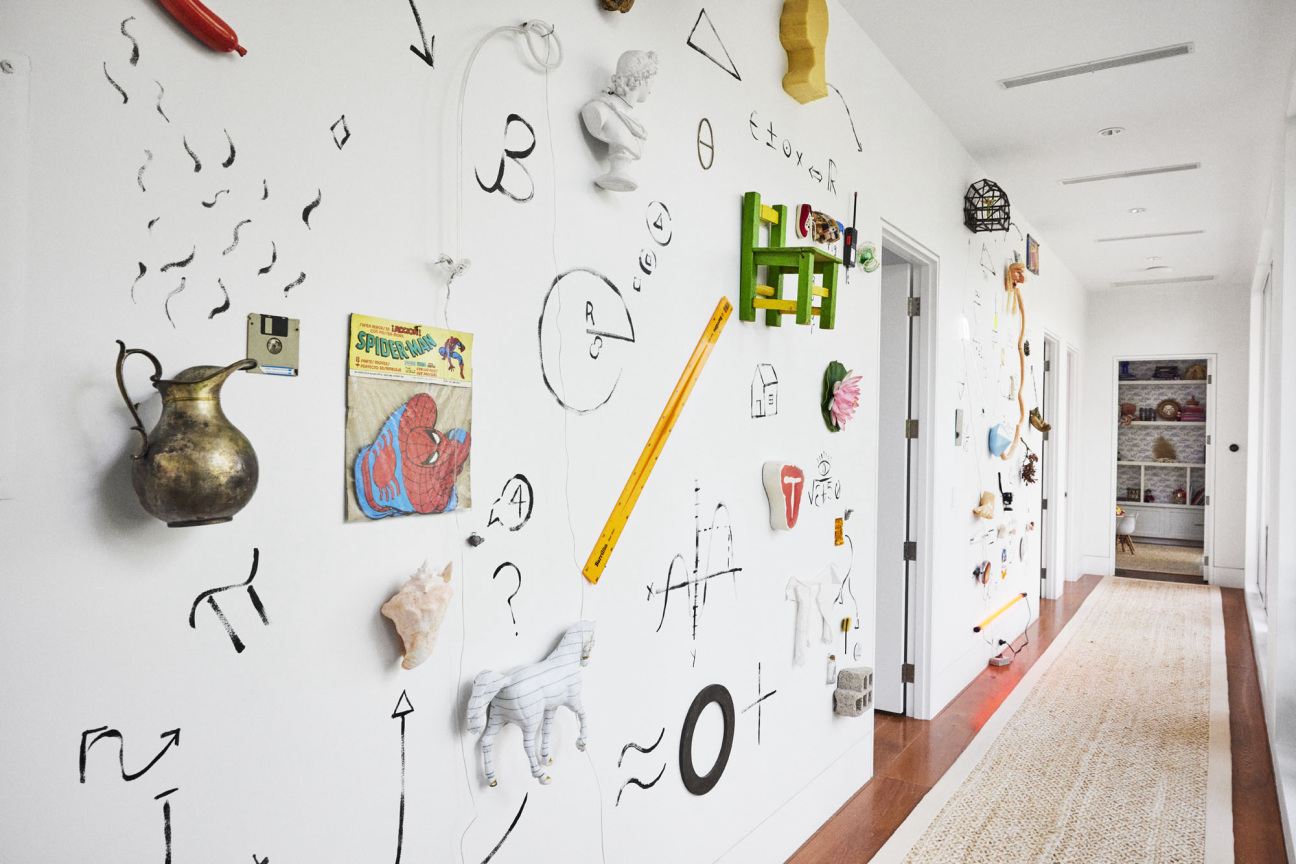
What's your favorite piece of art in the Baker's Bay home?
My favorite piece of art in this house is by the artist Gabriel Rico. I saw it in a gallery and fell in love. It was massive. I purchased it without really having a good wall for it, so it sat in storage for the next couple of years until I called Gabriel and begged him to reconfigure it because I just wanted to live with it. He was very sweet and divided the work onto two walls even though it was never intended to be shown that way. Ninety-five percent of my collection is female artists, but once in a while, I see a work that I can’t live without, so that is what happened when I saw Gabriel’s work. It was love at first sight.
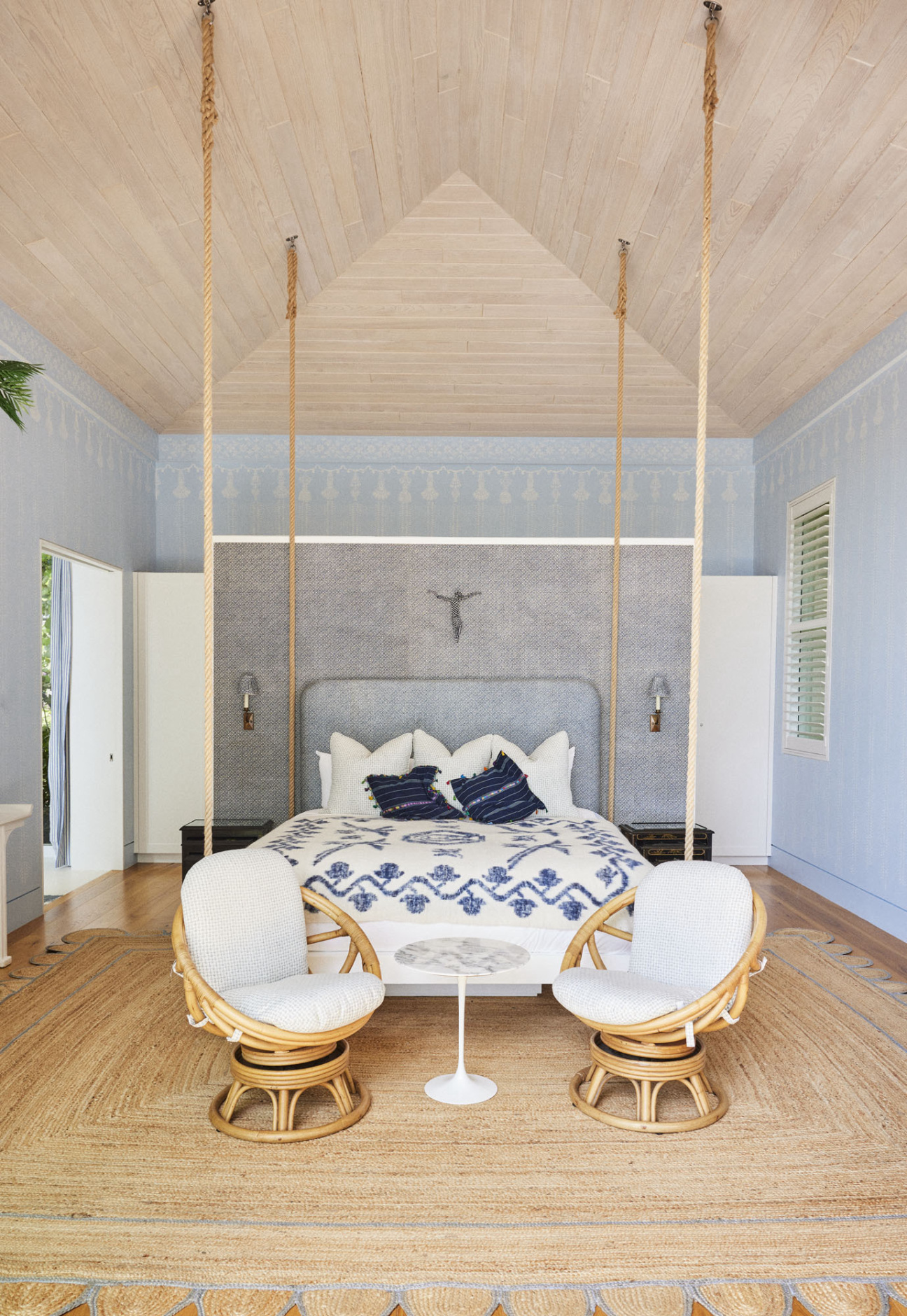
Which work in your home provokes the most conversation from visitors?
The Jesus sculpture by Elizabeth Englander is a piece of art that has sparked numerous conversations. Elizabeth created this sculpture during her residency in a Spanish nunnery, where she stumbled upon old swimsuits worn by the nuns and used them to craft this body of work. I love this artwork so much. Growing up in a communist environment, the idea of having Jesus on the wall was such a foreign concept, but deep inside of me, I always wanted one. So, this is my Jesus, and I pray to him.
What is the first piece you ever bought?
The first piece of art I ever bought was a “Truisms” from Jenny Holzer.
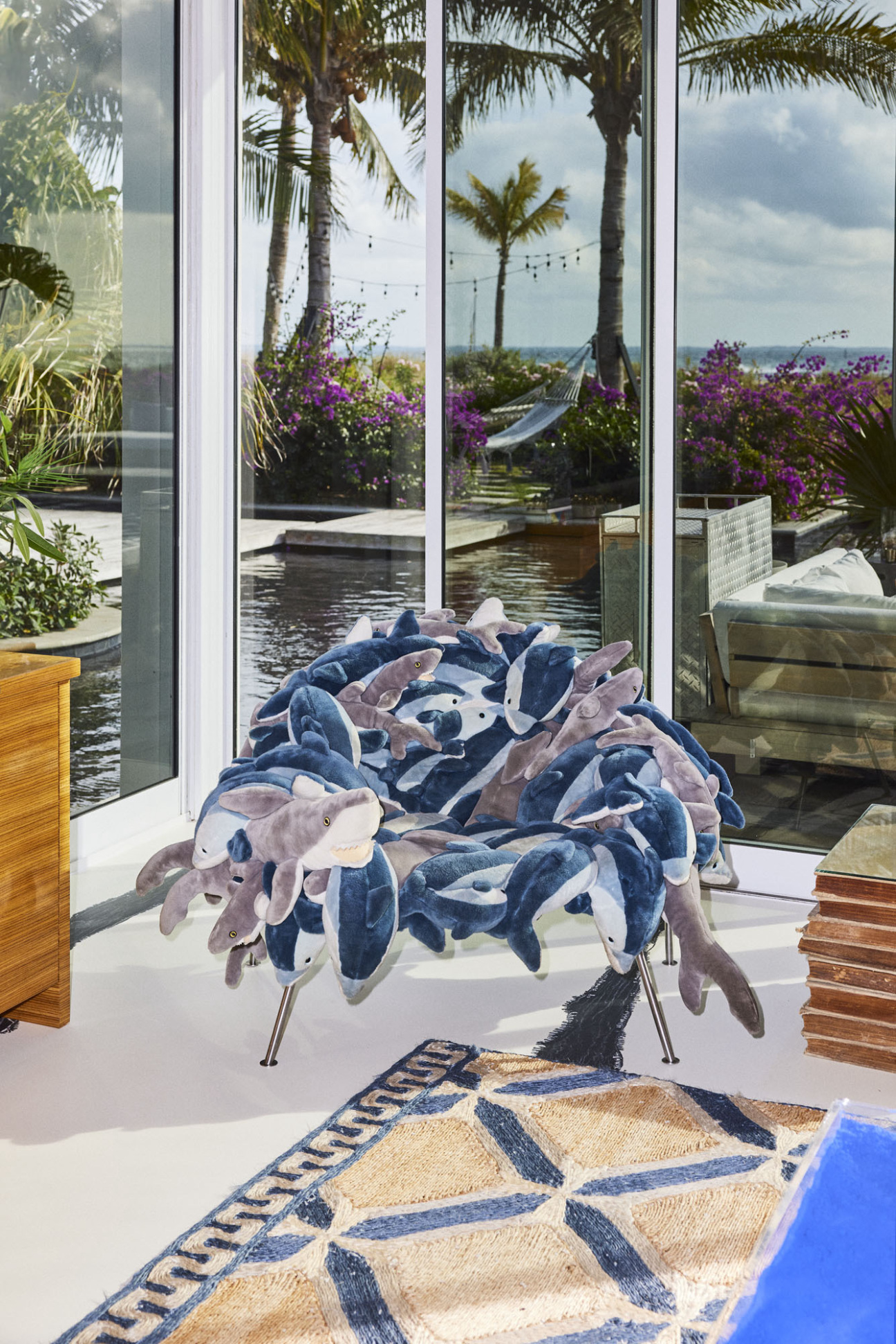
How do you discover new artists or work?
When I lived in New York, it was much easier to discover new artists. However, after my kids started school, we moved to Miami full-time. My favorite thing to do is visit art studios. I also try to read many art blogs and talk to galleries and art advisors who are on the ground, discovering new artists every day. All of this helps me stay connected. I’m also involved in a couple of museum boards, including the Whitney’s Chairman’s board, the New Museum Artemis Council, and the Bass Museum of Art board in Miami. I follow every design and art auction around the globe. It's like a full-time job, but I love it!
Which artist are you currently most excited about and why?
From the artists I already own, I’m excited about Lauren Halsey, Janiva Ellis, Elaine Cameron-Weir, and Kelly Akashi. When it comes to the artists I’m interested in adding to the collection: Maja Ruznic, whose last show at the Karma Gallery blew me away, and Amber Wellmann, whom I consider to be one of the best painters of her generation.

How does travel factor into your design/collecting process? Is there any trip in particular that sparked a new chapter in jewelry design for you?
A few years ago, I visited Naoshima in Japan and had the opportunity to meet an incredible urushi lacquer master on the way there. We started collaborating on creating special pieces of jewelry, tableware, and small objects. The process of making urushi lacquer items is very intricate and expensive, and unfortunately, this art form is dying, even in Japan. Urushi is made from the sap of the Japanese lacquer tree, which is a relative of poison oak. The lacquer is highly toxic, and making it requires months or even years of labor.
Once the sap is applied to a wood object, it becomes one with the wood, starts breathing, and gives it a sense of being alive, ensuring its longevity. If well taken care of, a piece made with urushi can last for a thousand years. After completing the urushi process, we start creating custom drawings using 24-karat gold and inlays of mother-of-pearl. The luster of a urushi piece grows the more it is used. I enjoy making glassware and tableware the most. My hope is that my clients can use these items every day and eventually pass them on to their children and grandchildren, making them true heirloom pieces of art.










 in your life?
in your life?

